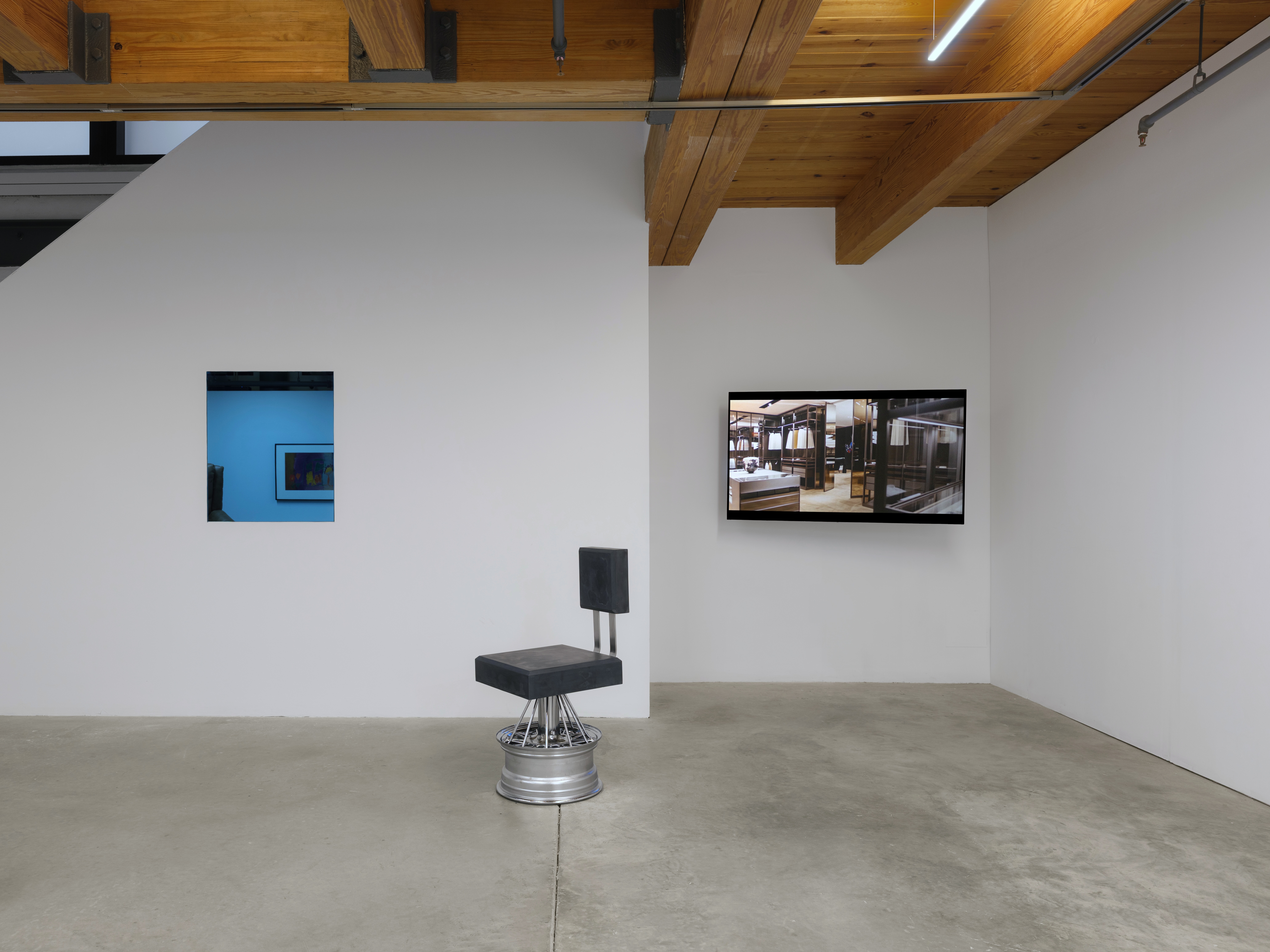Chairs (2025)
The chair by the window is an old friend, Anonymous Gallery, New York


The exhibition The chair by the window is an old friend traverses the complex terrain of personal space,exploring the dual nature of our interiors - as both sanctuary and captor. It examines how the objects wechoose to live with become extensions of ourselves, physical manifestations of memory, identity, andlonging. Our homes are not merely shelters; they can be self-portraits, layered with the weight of our pastsand the architecture of our aspirations.The warm glow of Josef Strau’s sculpture whispers across a tangle of wires as if caughtmid-conversation in the soft static of memory and electricity. Klara Linden’s Bench - formed but not fit forthe weight of a body. A similar quiet choreography of presence and absence is available in Elliot Reed’swork - two umbrellas lean and lurch like bodies mid-step, stumbling clumsy like two left feet. Theumbrellas themselves are tender emblems of movement, misalignment, and transformation. Mike Kelley’schildish scribble hung proudly on the wall - triangle roof, door, window, chimney, green grass. Dozie Kanuabandons utilitarianism for the conception and weight of family, heritage and presumption. Nan Goldin’srumpled bed, strewn with tender chaos, leaves quiet traces of a vanished presence still warm in thesheets. These are more than objects; they are relics of the lives we construct and the selves we perform.But home is rarely uncomplicated. A home can be a refuge, or a cage. In an era where the outside worldhums relentlessly through screens and news feeds, the interior becomes a liminal space, suspendedbetween connection and isolation. Are we protected, or hidden? Is the choice solitude, or has it chosenus?
The exhibition unfolds as a journey through these contradictions. The installation aims to echo thelayered emotions embedded within our domestic spaces: A video by Kamil Dossar, like his paintings,pulse like a fractured memory loop. Internalized surveillance (discipline via aesthetics) and external(state, technological, algorithmic). Carolyn Lazard’s recliner chair in an active state of adjustment andbodily consideration - insisting that care, stillness, and access are forms of radical architecture. JaneDickson’s work, painted on rug, implies consideration before entry. The windows, shades half-drawn,inviting a breeze that never quite makes it in. Felix Gonzalez-Torres’s mirrored “Untitled” (Fear), 1991,reflects who we believe we are, or who we wish to become. Each work interrogates the ways we occupyour interiors, and how those spaces, in turn, occupy us.Our homes hold us in an intimate, ongoing dialogue between what we let in and what we keep out. Theyare palimpsests of our desires, anxieties, and histories. Constantly rewritten, yet never entirely erased. In afragmented world, where belonging feels increasingly provisional, our interiors absorb the tension. Theybecome sites where comfort and confinement blur, where we hold fast to the familiar even as it binds usin place.
DELIGHT (2024)
UHD VIDEO (06:33)
